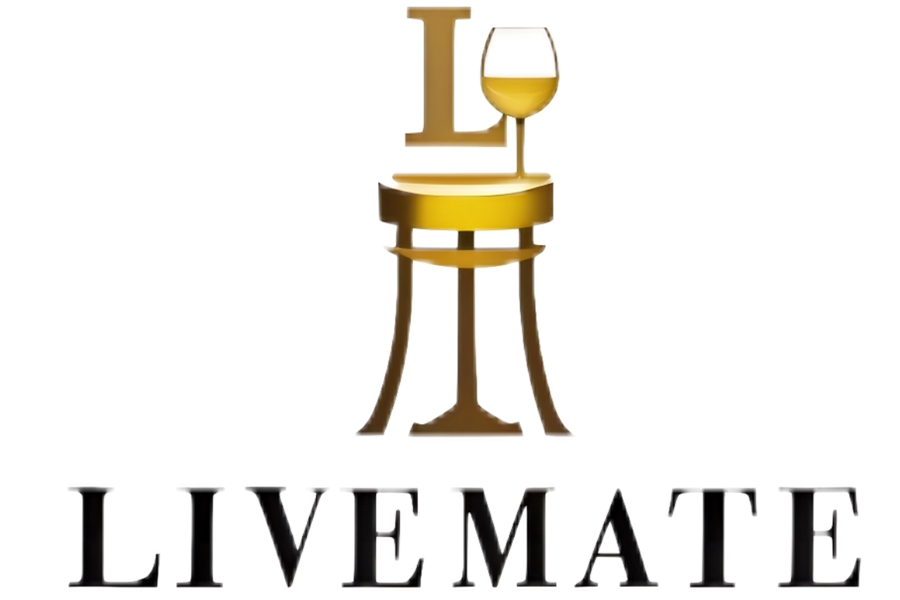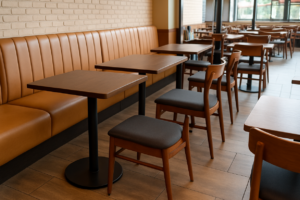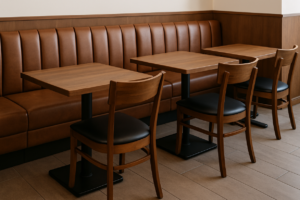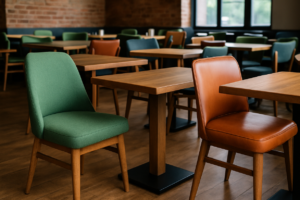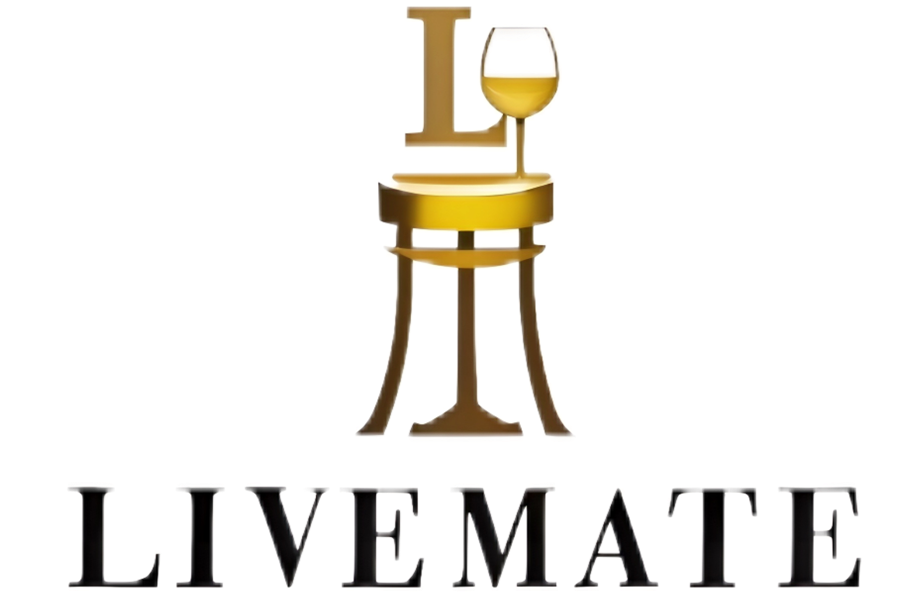Choosing the right furniture can feel overwhelming. It’s a big investment that impacts customer experience. What if you could create a space that’s both stylish and functional?
Choosing the right restaurant furniture is crucial for creating a welcoming and functional space. Focus on durability, comfort, and style to enhance the dining experience and reflect your brand.
I know that picking furniture is tough. And if you don’t get it right, people might not want to come back. Let’s walk through how to do it well.
What Furniture Should Be in a Restaurant?
Figuring out what furniture you actually need can be confusing. Restaurants require more than just tables and chairs. Let’s simplify this and make sure you have everything covered.
A restaurant typically needs tables, chairs, booths, bar stools, and waiting area seating. The specific pieces depend on the restaurant’s style and the dining experience you want to provide.
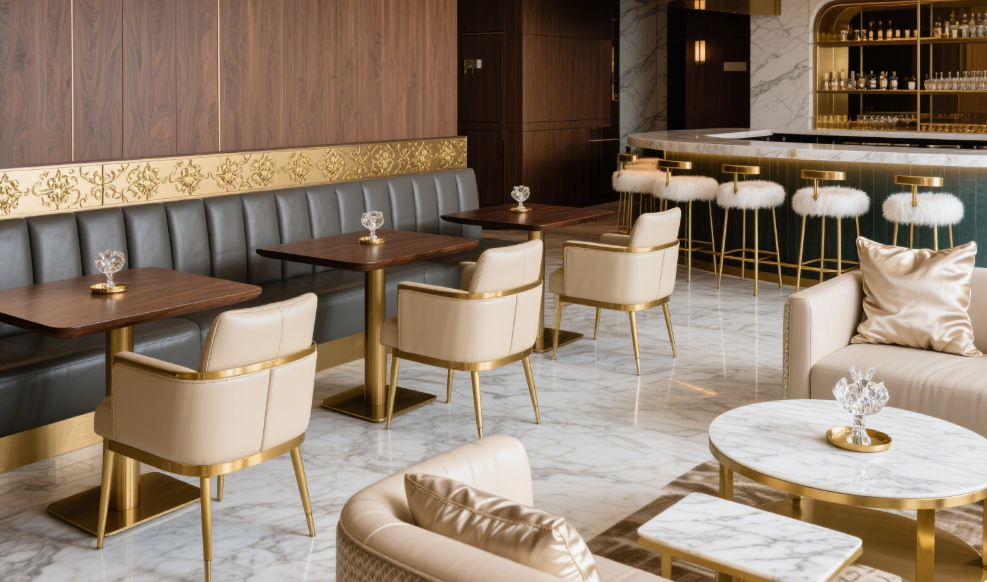
Think about the different areas of your restaurant. In the dining area1, you’ll need tables and chairs or booths. Consider a mix of table sizes to accommodate different party sizes. For a bar area, bar stools and high-top tables are essential. If you have a waiting area, comfortable seating like sofas or benches will make guests feel welcome. Don’t forget about outdoor spaces2! Patio furniture needs to be durable and weather-resistant.
Here’s a breakdown of essential restaurant furniture:
| Furniture Type | Purpose | Considerations |
|---|---|---|
| Tables | Dining, drinks | Size, shape, material, durability |
| Chairs | Seating at tables | Comfort, style, stackability |
| Booths | Comfortable, intimate dining | Space, upholstery, design |
| Bar Stools | Seating at the bar | Height, back support, swivel |
| Waiting Area Seats | Comfort while waiting | Comfort, style, durability |
| Outdoor Furniture | Seating for outdoor dining | Weather resistance, material, comfort |
Also, remember smaller details like coat racks, trash receptacles, and even decorative pieces can influence the overall ambiance. Prioritize furniture that blends functionality with your restaurant’s aesthetic.
What is Considered the Best Table in a Restaurant?
Wondering which tables are the most popular for restaurant-goers? Different people have different preferences and tastes. Here’s what many customers look for when choosing a table.
Many restaurant-goers prefer booths for their comfort and privacy. Window seats are also popular for the view. The "best" table depends on individual preferences and the restaurant’s ambiance.
The best table isn’t just about location; it’s also about the table itself. Consider the size and shape of your tables. Round tables3 can create a more intimate atmosphere, while rectangular tables are great for larger groups. Square tables offer flexibility and are easy to combine. A good table should be sturdy and well-maintained4. Cleanliness is crucial – a sticky or wobbly table can ruin a dining experience.
Here’s a quick guide to table shapes and their benefits:
| Table Shape | Advantages | Disadvantages |
|---|---|---|
| Round | Intimate atmosphere, encourages conversation | Less versatile, harder to combine |
| Rectangular | Accommodates larger groups, efficient use of space | Can be difficult for conversation across the table |
| Square | Flexible, easy to combine, good for smaller groups | Limited seating capacity |
| Booths | Comfortable, private, maximizes space along walls | Can be more expensive, less flexible |
Personally, I believe that paying attention to these details will really improve how people feel about your restaurant.
How to Choose the Perfect Dining Table?
The range of options when it comes to tables can be a lot. Making the wrong choice means a bad customer experience. Let’s get this right by covering essential factors in detail.
Consider your restaurant’s style, space, budget, and the dining experience you want to create. Choose durable materials that are easy to clean, and ensure the table size fits your typical party size.
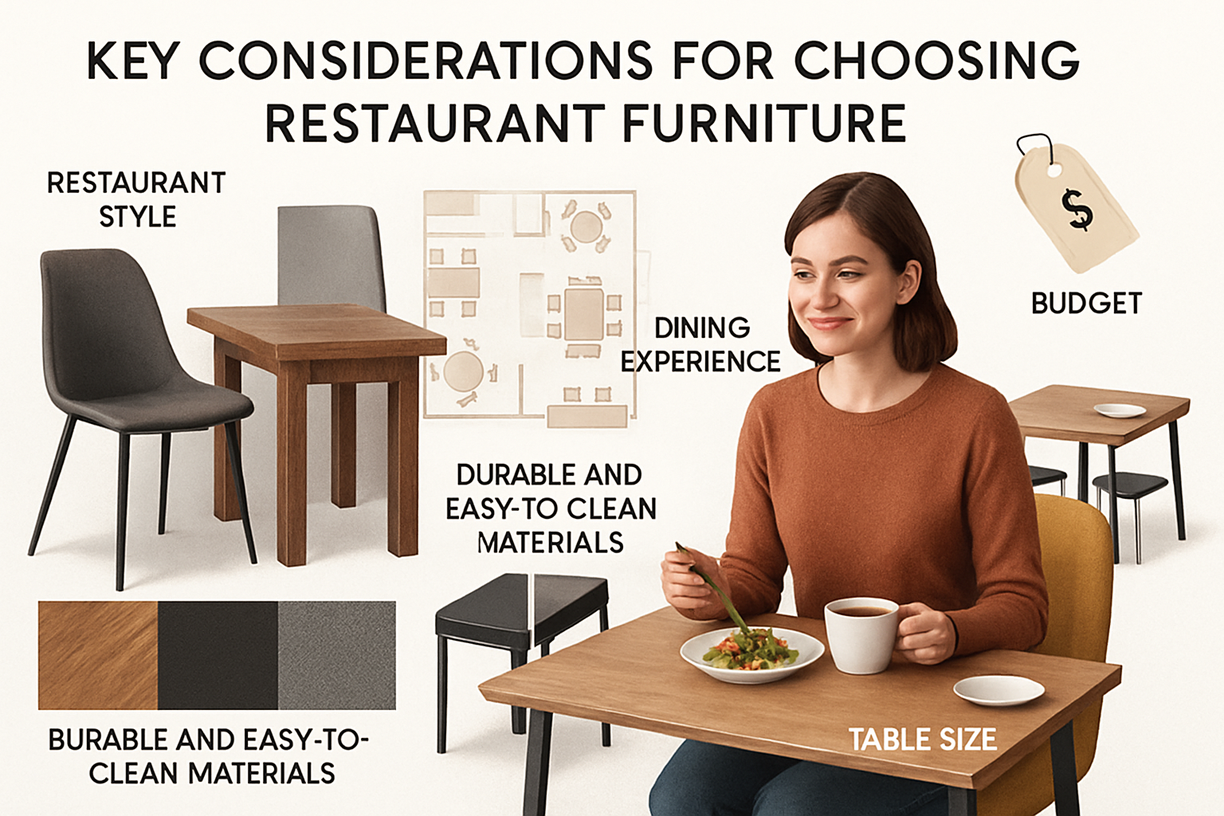
Selecting the perfect dining table1 involves a combination of factors. First, assess your restaurant’s style and tone. A fine dining establishment will require different tables than a casual bistro. Next, evaluate your space. Measure your dining area and plan your table layout carefully. Consider the material of the table. Wood offers a classic look, while metal and laminate are more durable and cost-effective. Table height is also important. Standard dining table5s are around 30 inches high, while bar-height tables are taller.
Here’s what I think you should keep in mind:
| Factor | Considerations |
|---|---|
| Style | Match your restaurant’s theme (modern, rustic, classic) |
| Space | Measure your dining area, consider table spacing |
| Material | Wood, metal, laminate, stone – each has pros and cons |
| Durability | Choose materials that can withstand heavy use and are easy to clean |
| Size & Shape | Match table size to party size, consider round, rectangular, and square options |
| Budget | Set a budget and stick to it, explore different options within your price range |
I’ve learned that it is better to spend a bit more on quality tables. It will definitely pay off in the end.
Conclusion
Choosing the right restaurant furniture needs thought and care. By focusing on these points, you’ll create an inviting space that customers will love.
-
Explore this link to discover essential furniture choices that enhance the dining experience and accommodate various party sizes. ↩ ↩
-
Check out this resource for tips on selecting weather-resistant patio furniture that ensures guest comfort and longevity. ↩
-
Explore the advantages of round tables, including how they enhance intimacy and conversation during meals. ↩
-
Learn why the quality and upkeep of a dining table are essential for a pleasant dining experience. ↩
-
Explore this link to discover various materials for dining tables, helping you choose the perfect one for your restaurant’s style. ↩
